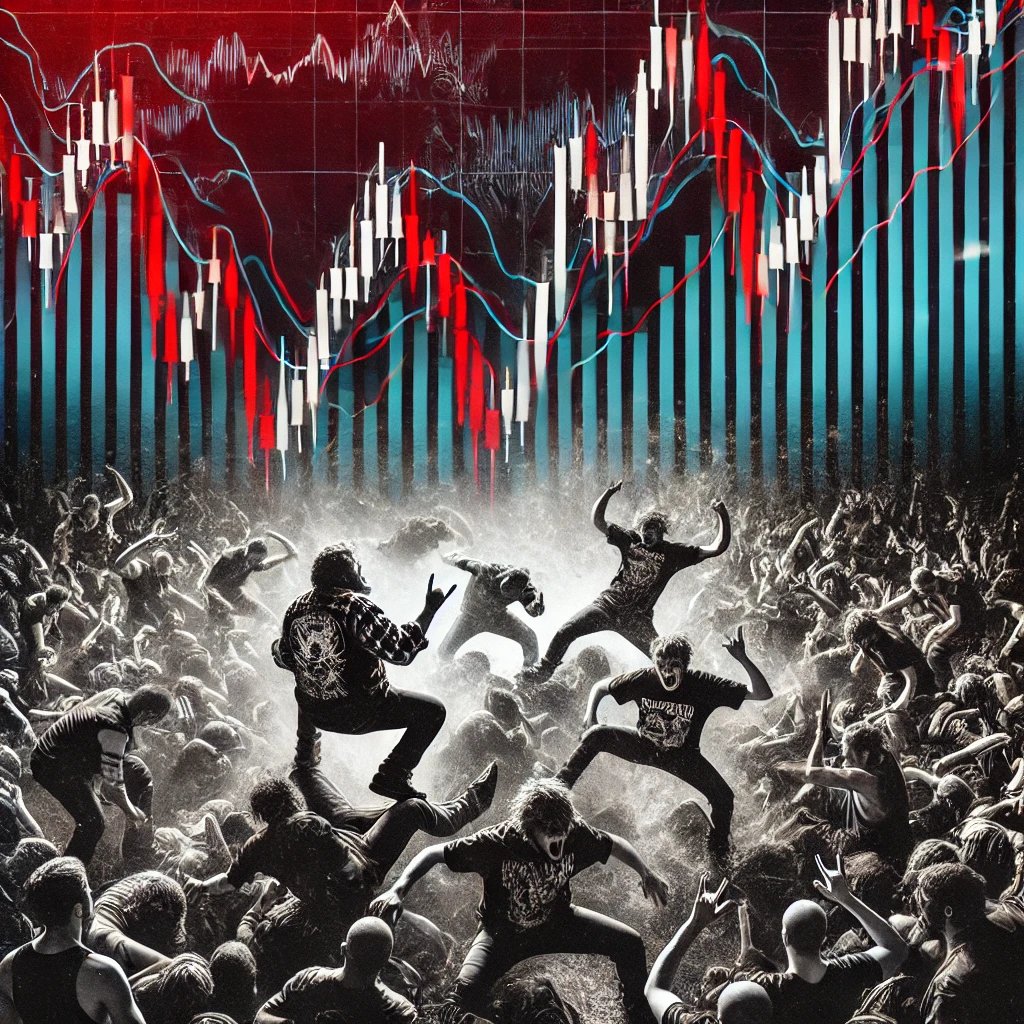The market is down, your stocks look like they’ve been drop-kicked into the underworld, and every headline screams doom. Sound familiar? It’s called a bear market, and if you’re not ready to fight for your sanity, it can chew you up and spit you out. But here’s the thing: if you’re a devoted metalhead, you’re already trained to endure chaos—whether it’s in the middle of a mosh pit or blasting brutal riffs in your headphones. Why not take the same no-nonsense attitude to your portfolio?
Just like a surprise guitar solo can turn a song on its head, the market can flip overnight, leaving even seasoned investors shell-shocked. But as every metal fan knows, sometimes you’ve got to keep headbanging through the breakdown. So sharpen your elbows and crank up the amps, because we’re about to explore how to not only endure a bear market—but to come out of it stronger.
The Bear Market Blues
What It Is and Why It Happens
A bear market occurs when stock prices tumble by 20% or more from recent highs, reflecting widespread pessimism. According to Investopedia, bear markets can be triggered by economic slowdowns, geopolitical upheaval, or even a sudden loss of investor confidence—just like how the mood at a metal show can shift if the crowd picks up on negative energy.
Does that mean we should all throw in the towel? Hardly. Just like you wouldn’t quit on your favorite band the minute they release one weak album, you don’t bail on the market the moment things get choppy. Bear markets are an inevitable part of the economic cycle, and surviving them is how the real legends are born.
Coping Mechanisms
Budget, Diversify, and Headbang
- Reassess Your Portfolio
- Bear markets can expose weaknesses—both in your holdings and your risk tolerance. Now’s the time to see which stocks (or funds) are truly worth holding and which are dragging you down. A little pruning can free up resources to invest in opportunities that may arise when prices are low.
- Build a Safety Net
- If possible, maintain some cash reserves or stable assets so you’re not forced to sell at rock-bottom prices. It’s like wearing sturdy boots in the pit: you’ll thank yourself when the crowd starts pushing back.
- Stay Educated
- Knowledge is your best armor. Dive into articles, talk to financial pros, and read up on market trends. The U.S. Securities and Exchange Commission (SEC) offers investor education resources that can help you spot scams and navigate turbulent times. The more you know, the less fear has a hold on you.
And if the gloom starts getting to you, sometimes you need to send a clear message to the world—like sipping from a fuck off coffee mug that embodies your rebellious attitude. After all, if you’re wrestling with a bear market, you don’t have time for sugarcoated nonsense.

When the market tanks, crank up the volume—bear markets call for brutal riffs.
Positioning for the Rebound
Buying the Dip (Or Holding Until It’s Over)
Most legendary metal records were forged in tough times—bands channeling real pain into epic anthems. Similarly, bear markets can be prime hunting grounds for savvy investors who spot undervalued stocks. Warren Buffett famously suggests being “fearful when others are greedy, and greedy when others are fearful,” implying that solid bargains emerge when widespread panic pushes prices too low.
- Focus on Quality
- Even the strongest companies can tank in a bear market, but they’re also the most likely to rebound when sentiment flips. Keep an eye on essential industries like energy, healthcare, or innovative tech—think of them as your core rhythm guitar, anchoring your portfolio.
- Use Dollar-Cost Averaging
- If you believe in an asset long term, spread your purchases over time instead of trying to guess the exact bottom. This approach balances out short-term price swings. No one nails the perfect entry point every time, and it’s better to join the song at a decent spot than to miss it entirely.
- Diversify with Alternatives
- Cryptocurrencies or gold can sometimes buck the trend—or at least move to a different drumbeat—during stock slumps. Just be sure you understand the risks before diving in. According to Bloomberg, crypto markets can be even more volatile than equities, so approach them with caution.
If you do dabble in Bitcoin during the chaos, you might as well stash it in style. A bitcoin-themed coffee mug can serve as a cheeky reminder that while the stock market might be tanking, there’s a whole other realm of digital possibility out there.
A bear market might knock the wind out of your portfolio, but remember: metalheads don’t shy away from adversity—they crank the volume and plow straight through it. By budgeting wisely, diversifying, and maybe tapping into alternative assets, you can navigate the gloom and come out with some serious investing scars—AKA experience.
You’ll come away with more than just bruises; you’ll have a refined strategy, a tougher psyche, and maybe even a new perspective on what “value” really means. So the next time red numbers flood your screen, think of it as the breakdown in your favorite song—brutal, intense, but ultimately setting the stage for a crushing comeback.
In other words, keep your boots laced, your coffee scorching, and your riffs savage. Because a bear market can’t kill your spirit if you’re headbanging right through it.


